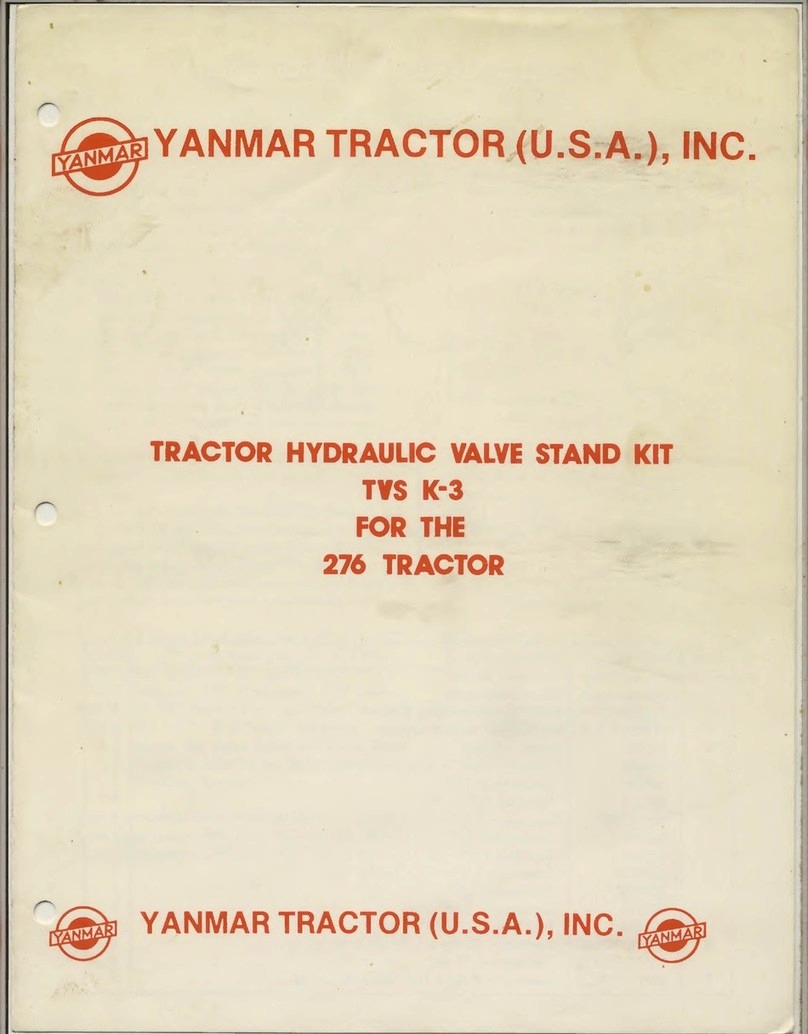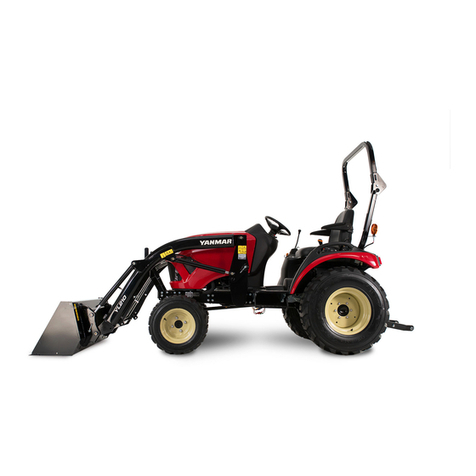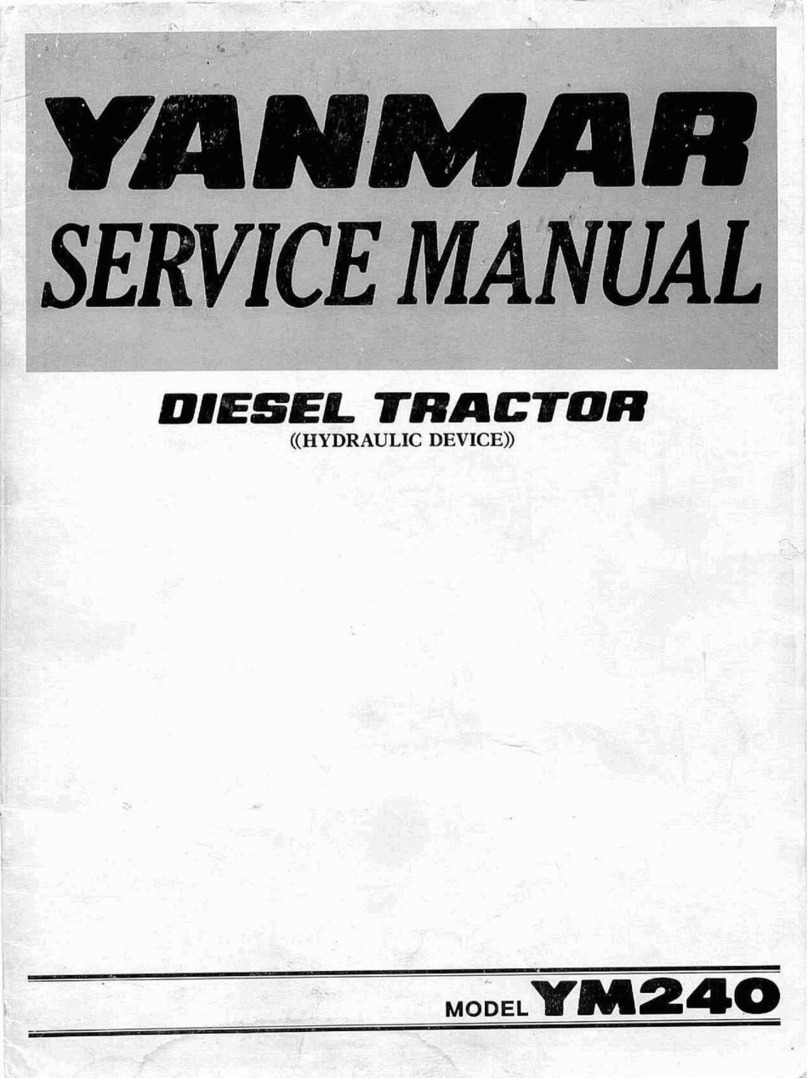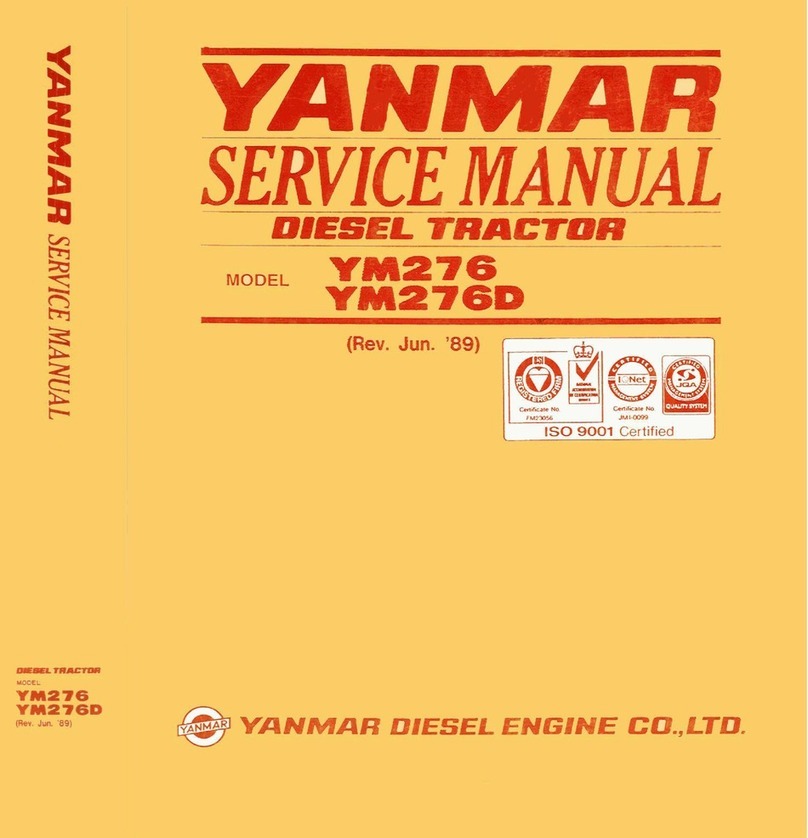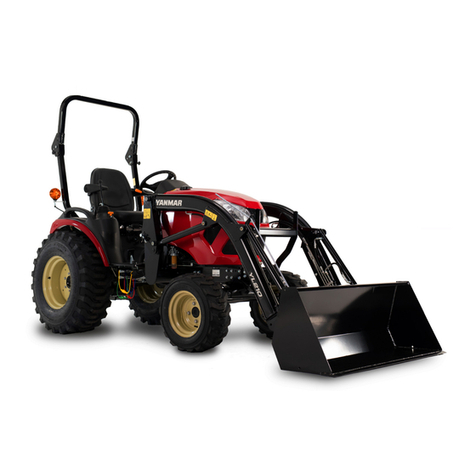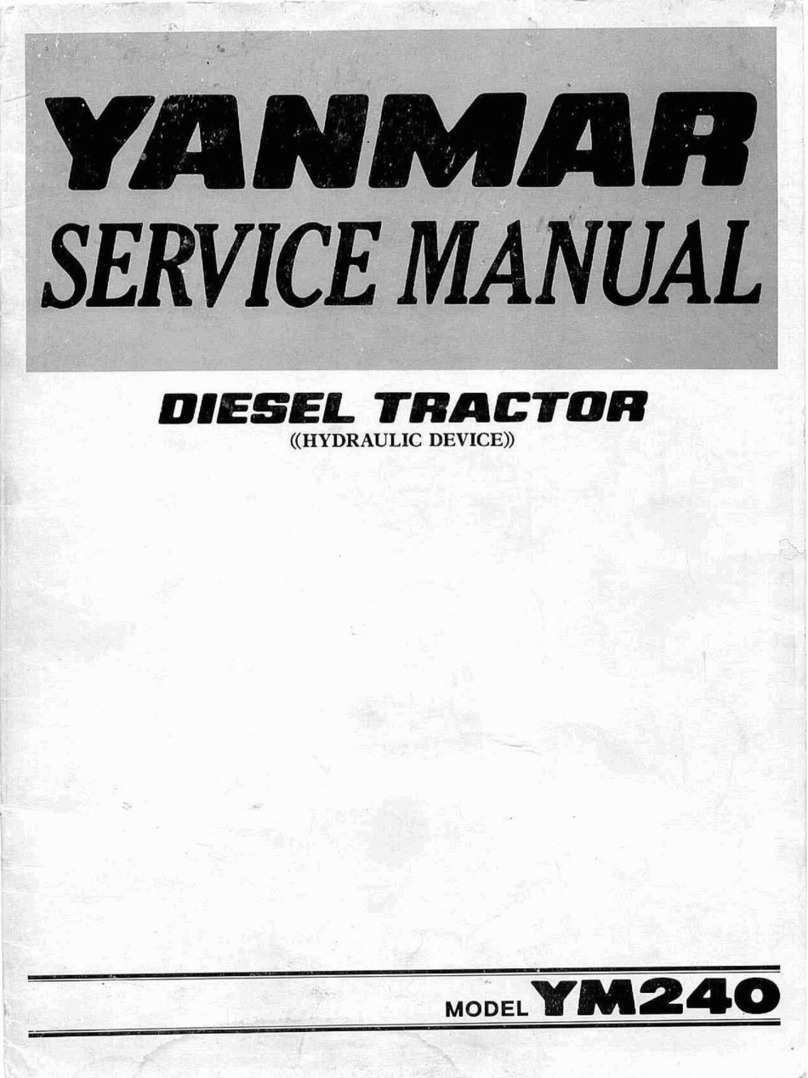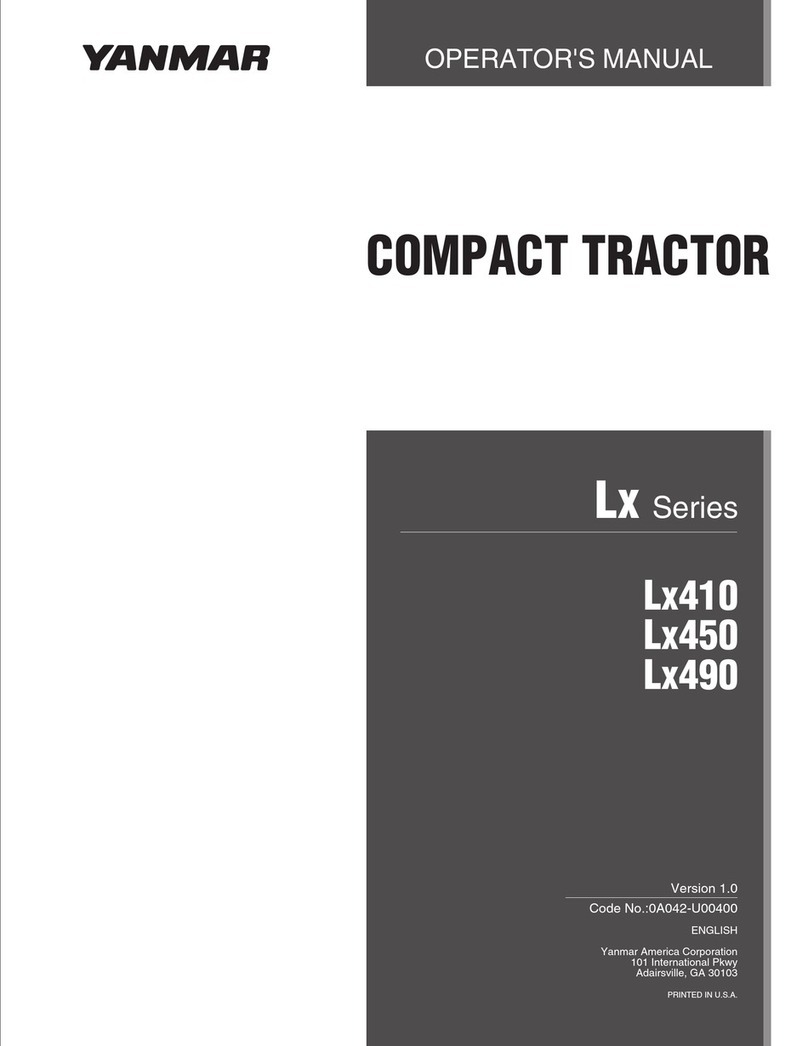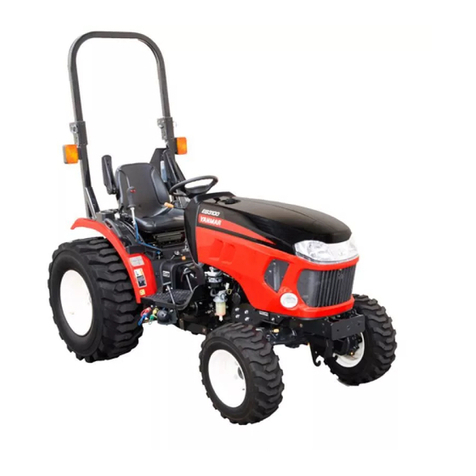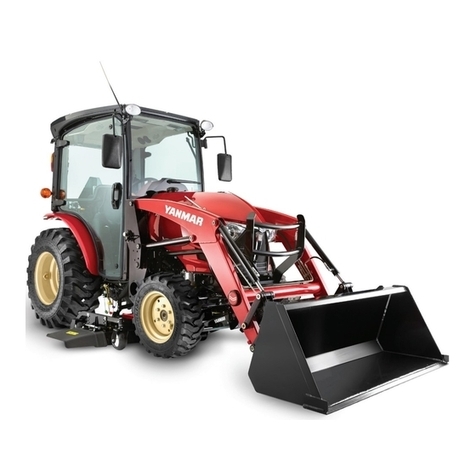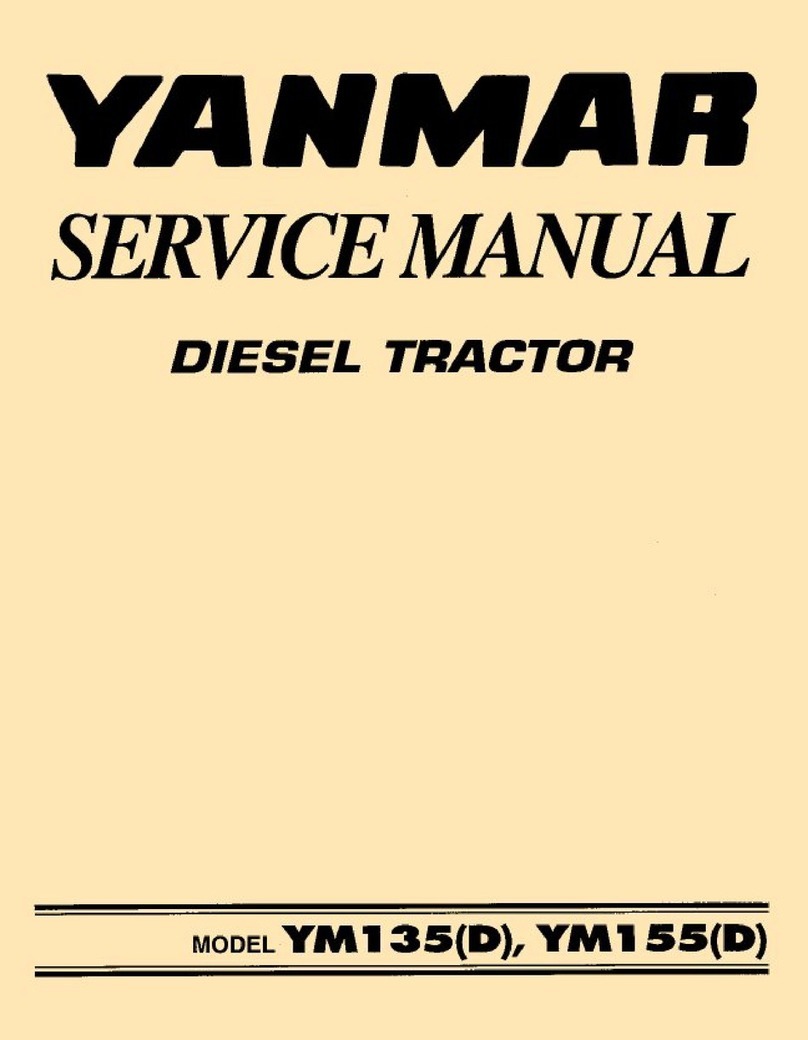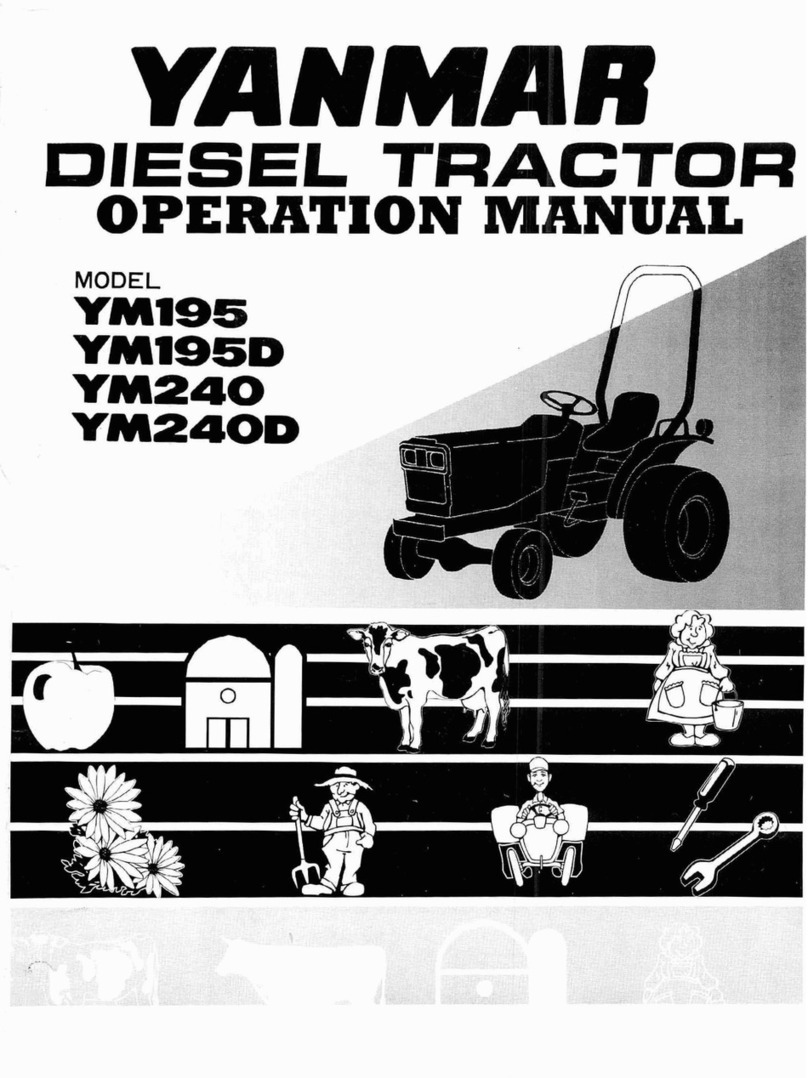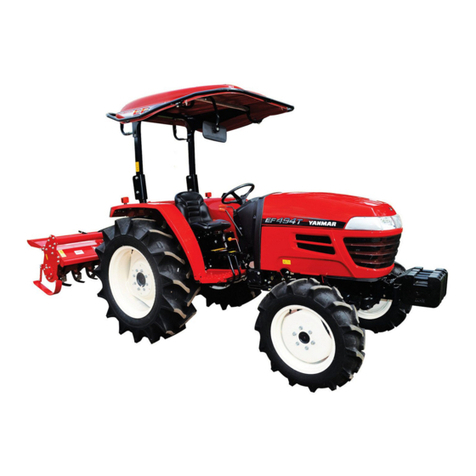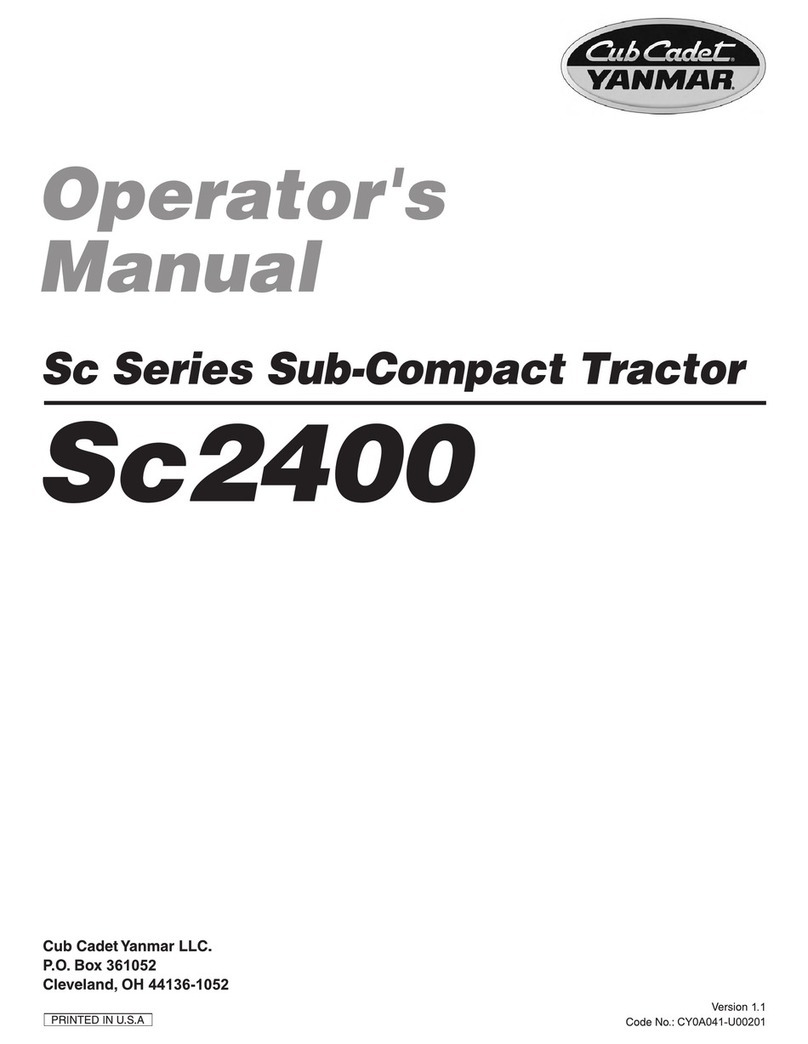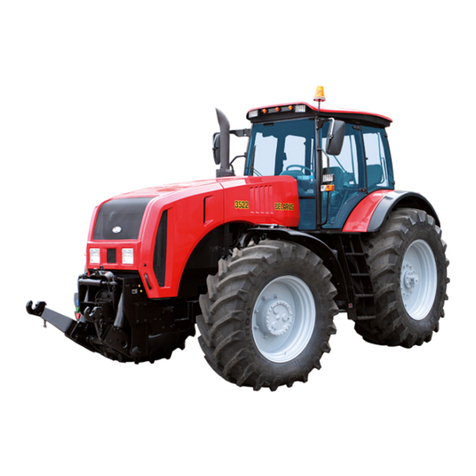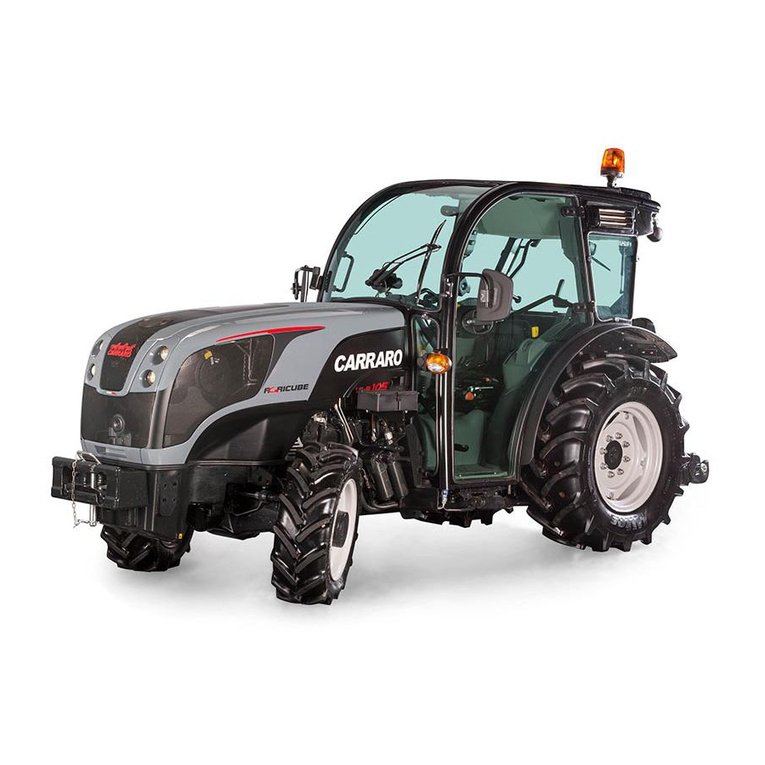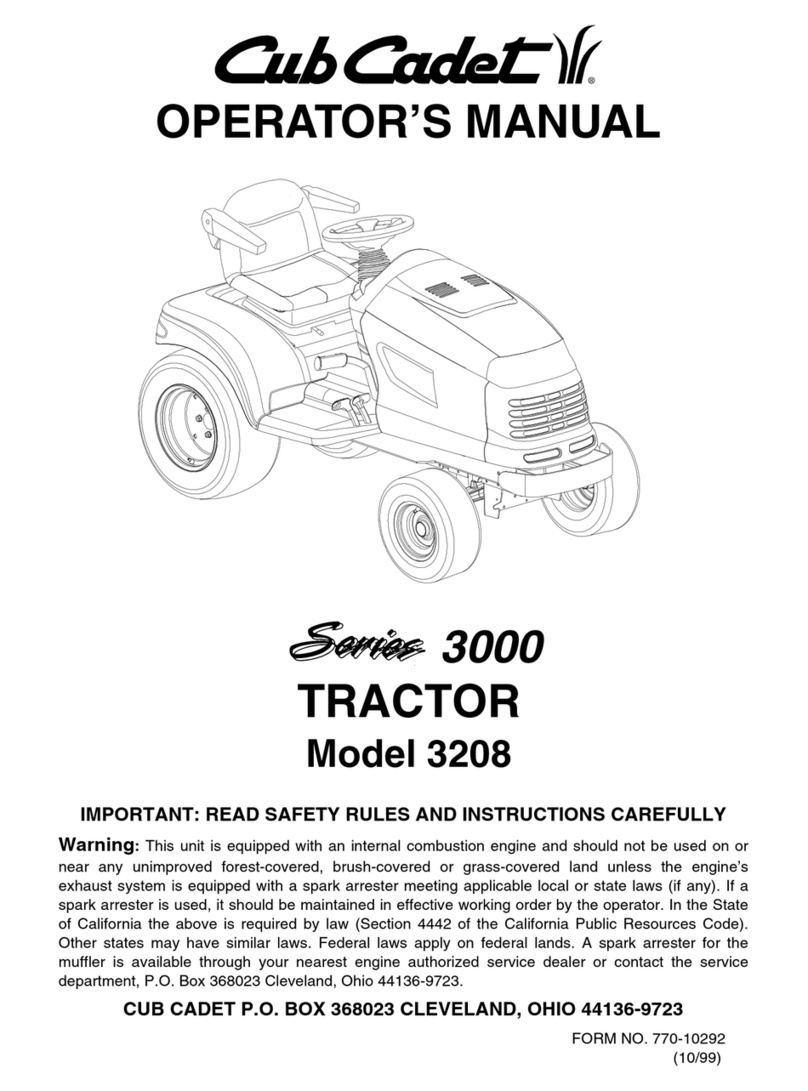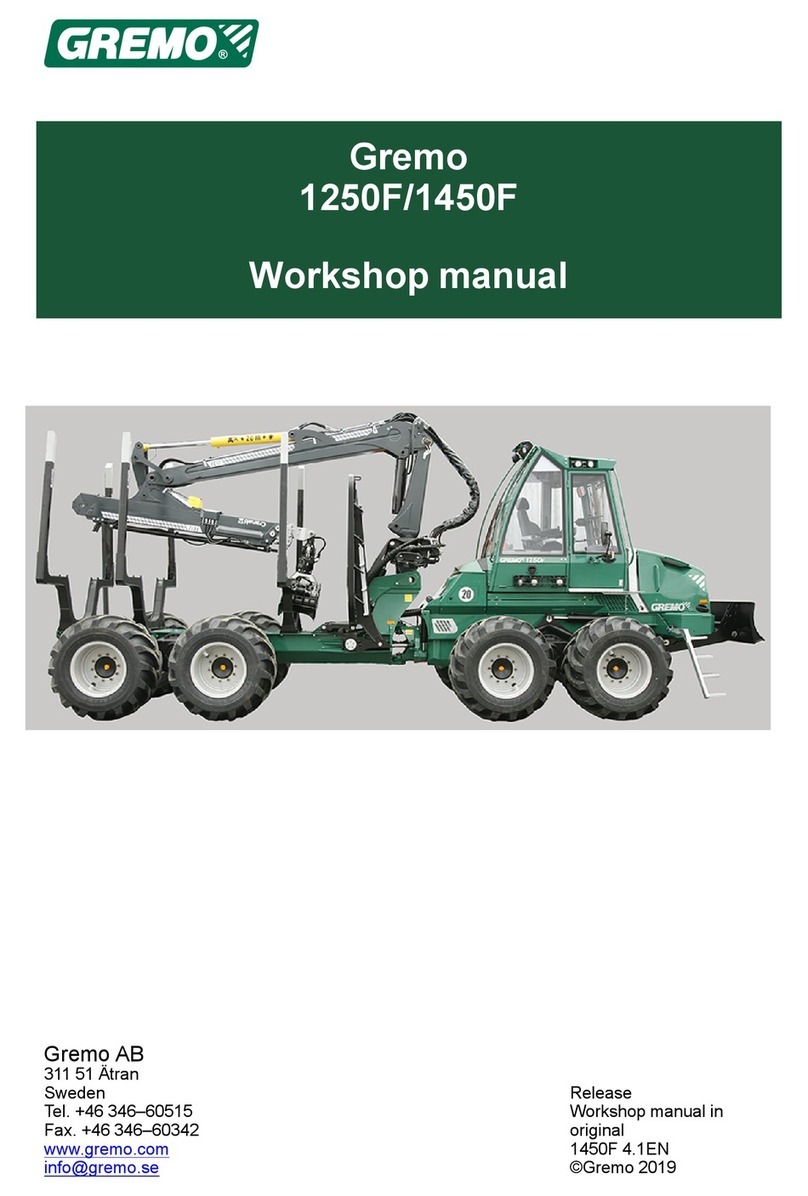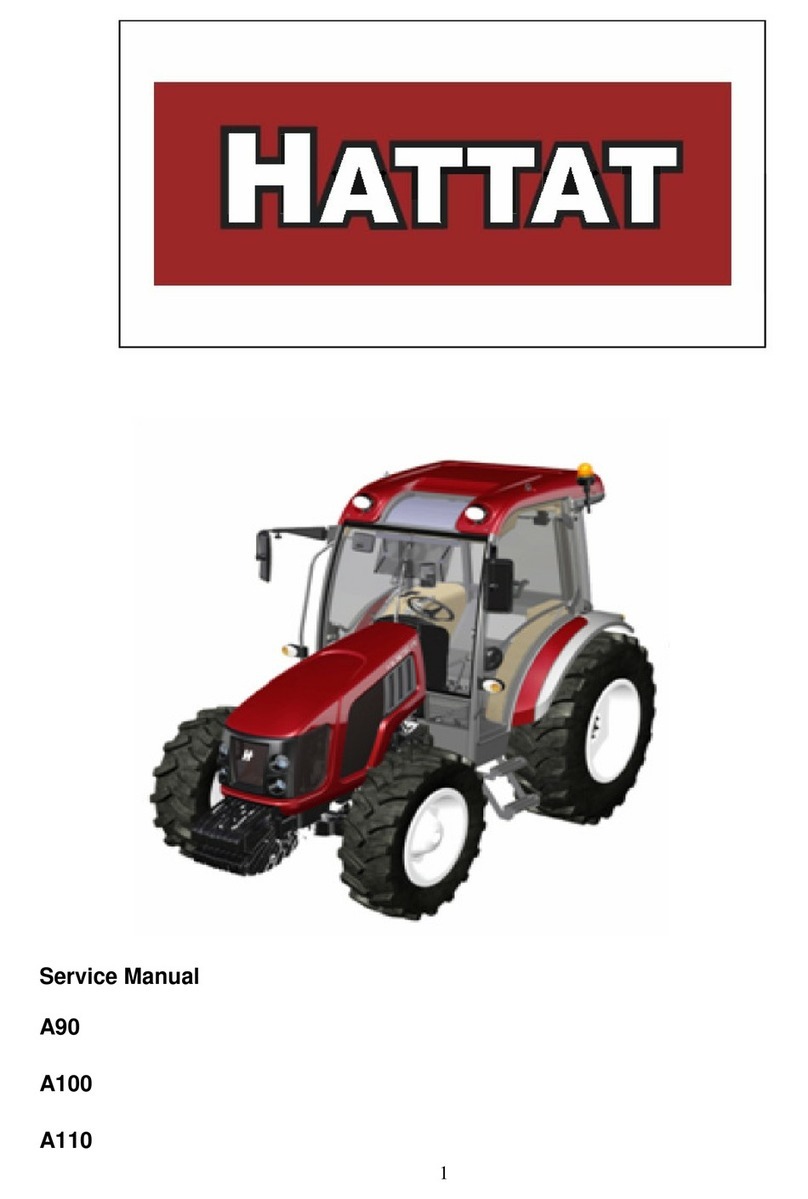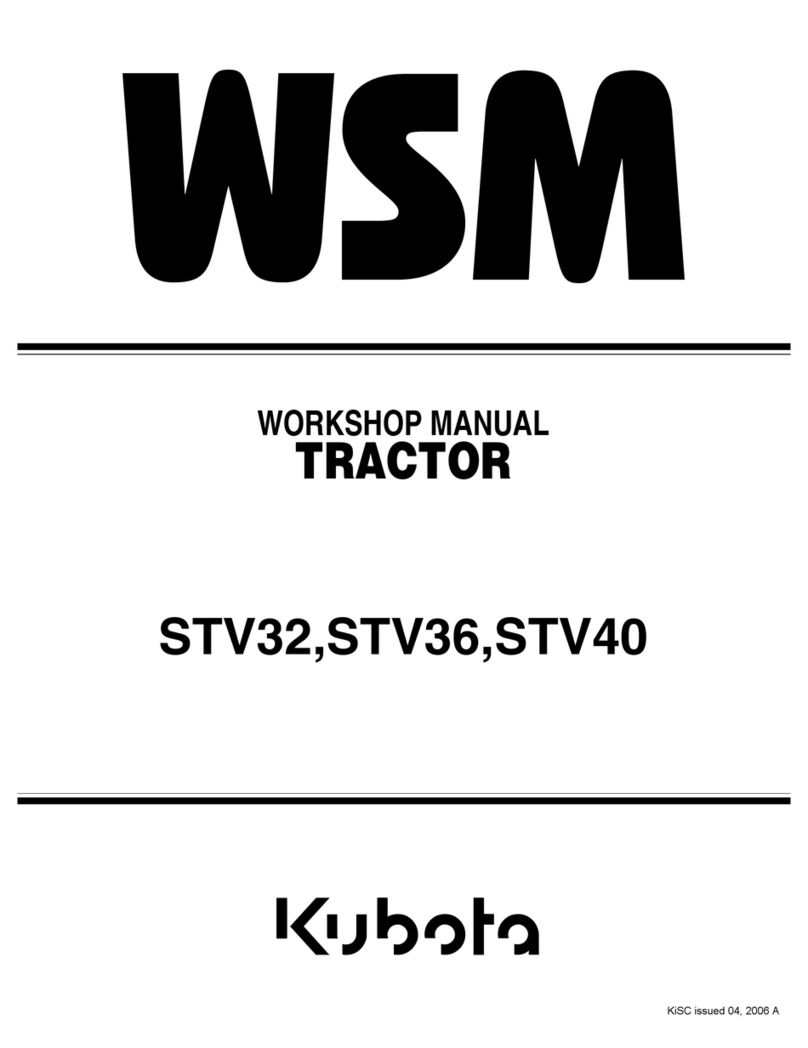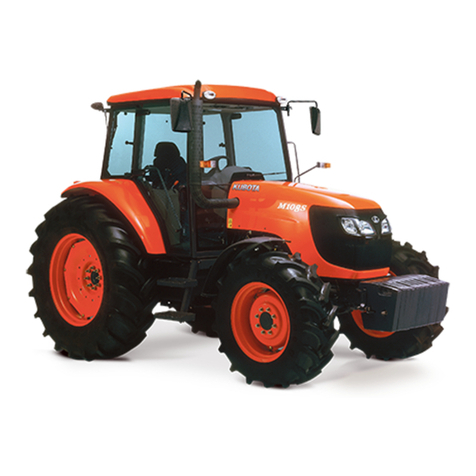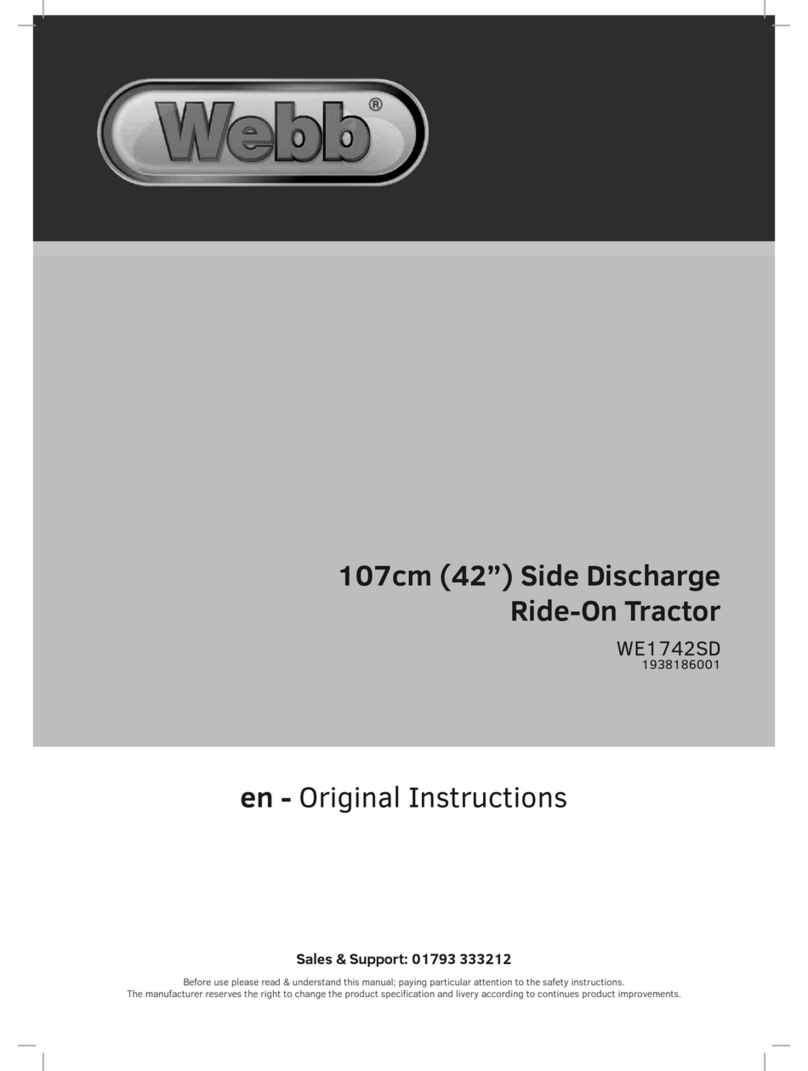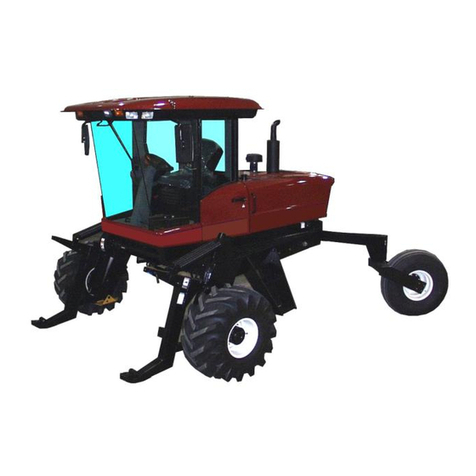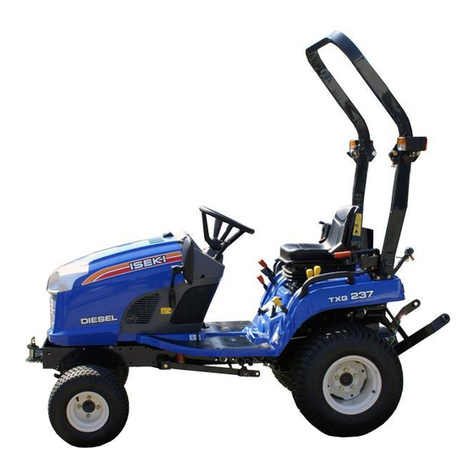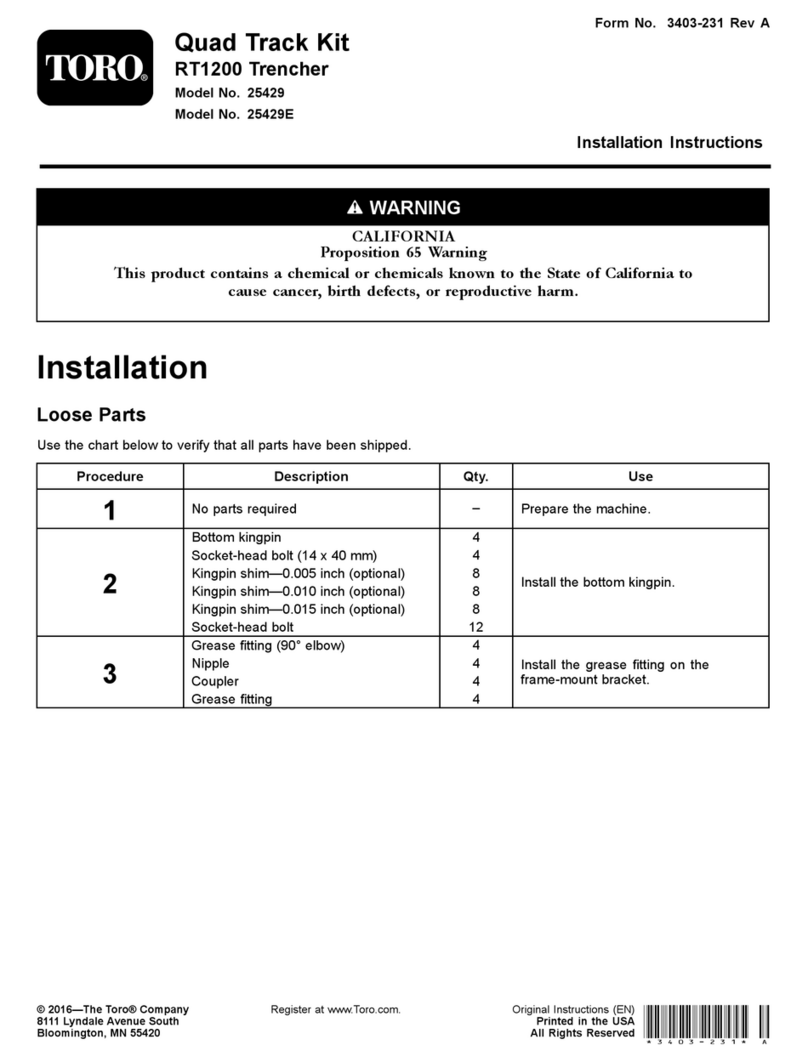5OPE_EF312T&352T_en.doc
Extreme caution will be required when operating tractor
around trees and other overhead obstructions such as
guy wire or power lines. Interference between ROPS
and these obstructions may cause tractor to tip over
rearward.
Do not modify structural members of ROPS by welding,
bending, grinding or cutting. If any component of the
ROPS is damaged or involved in an overturn incident,
replace it with a complete new one and do not attempt
to repair. Damaged or modified structural members
impair the strength of the ROPS and may lead to injury.
Avoid loose fitting or baggy clothing with tears, bulging
pockets, frayed edges or heavy cuffs. Loose frayed and
bulky clothing can easily become wrapped in revolving
parts. Wear working clothing and working shoes or
boots. Also you may need: SAFETY HELMET,
SAFETY SHOES, SAFETY EYE PROTECTION,
HEAVY DUTY GLOVES, HEARING PROTECTION,
REFLECTIVE CLOTHING, OR RESPIRATOR/FILTER
MASK.
Wear whatever safety gear and clothing is necessary
for the job.
Prolonged exposure to loud noise can cause
impairment or loss of hearing. Wear suitable hearing
protective device such as earmuffs or earplugs to
protect against objectionable and uncomfortable
noises.
BEFORE OPERATING
Do not operate the tractor when tired, ill, sleepy, drunk,
feeling overworked, taking medicines, pregnant,
suffering mental disease or other improper conditions.
These conditions impair a person’s skill and judgment.
When you begin feeling tired during operation, take a
10-minute break to stretch, walk about, lie down or
snack. Do not continue if you still feel tired after taking
a break.
